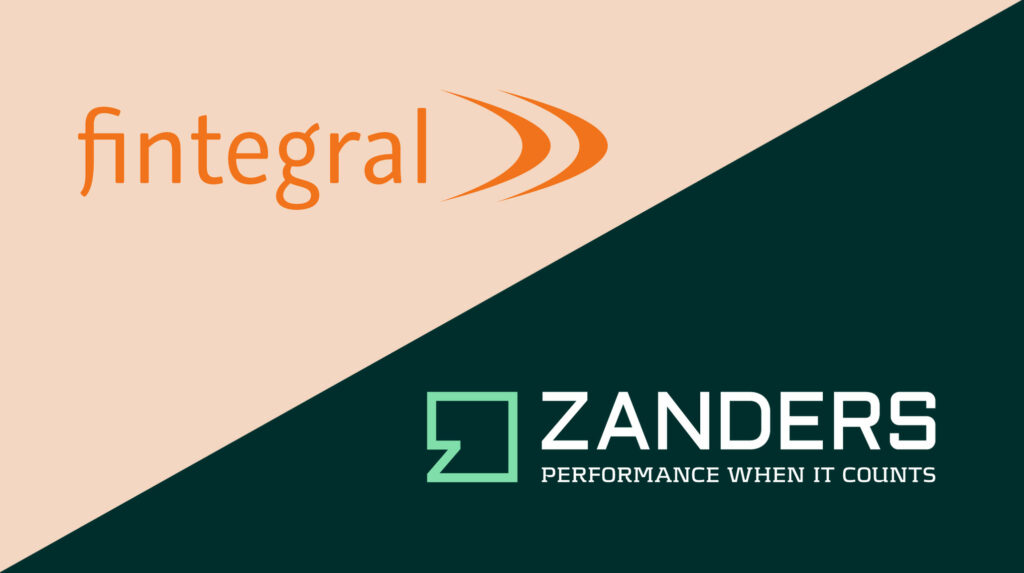Navigating intercompany financing in 2024

An update on the new transfer pricing regulations
In January 2022, the OECD incorporated Chapter X to the latest edition of their Transfer Pricing Guidelines, a pivotal step in regulating financial transactions globally. This addition aimed to set a global standard for transfer pricing of intercompany financial transactions, an area long scrutinized for its potential for profit shifting and tax avoidance. In the years since, we have seen various jurisdictions explicitly incorporating these principles and providing further guidance in this area. Notably, in the last year, we saw new guidance in South Africa, Germany, and the United Arab Emirates (UAE), while the Swiss and American tax authorities offered more explanations on this topic. In this article we will take you through the most important updates for the coming years.
Finding the right comparable
The arm's length principle established in the OECD Transfer Pricing Guidelines stipulates that the price applied in any intra-group transaction should be as if the parties were independent.1 This principle applies equally to financial transactions: every intra-group loan, guarantee, and cash pool should be priced in a manner that would be reasonable for independent market participants. Chapter X of the OECD Guidelines provided for the first time a detailed guidance on applying the arm's length principle to financial transactions. Since its publication, achieving arm's length pricing for financial transactions has become a significant regulatory challenge for many multinational corporations. At the same time the increased interest rates have encouraged tax authorities to pay increased attention to the topic – strengthened with the guidelines from Chapter X.
To determine the arm’s length price of an intra-group financial transaction, the most common methodology is to search for comparable market transactions that share the characteristics of the internal transaction under analysis. For example, in terms of credit risk, maturity, currency or the presence of embedded options. In the case of financial transactions, these comparable market transactions are often loans, traded bonds, or publicly available deposit facilities. Using these comparable observations, an estimate is made on the appropriate price of a transaction as a compensation for the risk taken by either party in a transaction. The risk-adjusted rate of return incorporates the impact of the borrower’s credit rating, any security present, the time to maturity of the transaction, and any other features that are deemed relevant. This methodology has been explicitly incorporated in many publications including in the guidance from the South African Revenue Service (SARS)2 and the Administrative Principles 2023 from the German Federal Ministry of Finance.3
The recently published Corporate Tax Guide of the UAE also implements OECD Chapter X, but does not explicitly mention a preference for market instruments. Instead, the tax guide prefers the use of “comparable debt instruments” without offering examples of appropriate instruments. This nuance requires taxpayers to describe and defend their selection of instruments for each type of transaction. Although the regulation allows for comparability adjustments for differences in terms and conditions, the added complexity poses an additional challenge for many taxpayers.
A special case of financial transaction for transfer pricing are cash pooling structures. Due to the multilateral nature of cash pools, a single benchmark study might be insufficient. OECD Chapter X introduced the principle of synergy allocation in a cash pool, where the benefits of the pool are shared between its leader and the participants of the pool based on the functions performed and risks assumed. This synergy allocation approach is also found in the recent guidance of SARS, but not in the German Administrative Principles. Instead, the German authorities suggest a cost-plus compensation for a leader of a cash pool with limited risks and functionality. Surprisingly, approaches for complex cash pooling structures such as an in-house bank are not described by the new German Administrative Principles.
To find out more about the search for the best comparable, have a look at our white paper. You can download a free copy here.
Moving towards new credit rating analyses
Before pricing an intra-group financial transaction, it is paramount to determine the credit risks attached to the transaction under analysis. This can be a challenging exercise, as the borrowing entity is rarely a stand-alone entity which has public debt outstanding or a public credit rating. As a result, corporates typically rely on a top-down or bottom-up rating analysis to estimate the appropriate credit risk in a transaction. In a top-down analysis, the credit rating is largely based on the strength of the group: the subsidiary credit rating is derived by downgrading the group rating by one or two notches. An alternative approach is the bottom-up analysis, where the stand-alone creditworthiness of the borrower is first assessed through its financial statements. Afterwards, the stand-alone credit rating is adjusted with the group’s credit rating based on the level of support that the subsidiary can derive from the group.
The group support assessment is an important consideration in the credit rating assessment of subsidiaries. Although explicit guarantees or formal support between an entity and the group are often absent, it should still be assessed whether the entity benefits from association with the group: implicit group support. Authorities in the United States, Switzerland, and Germany have provided more insight into their views on the role of the implicit group support, all of them recognizing it as a significant factor that needs to be considered in the credit rating analysis. For instance, the American Internal Revenue Service emphasized the impact of passive association of an entity with the group in the memorandum issued in December 2023.4
The Swiss tax authorities have also stressed the importance of implicit support for rating analyses in the Q&A released in February 2024.5 In this guidance, the authorities did not only emphasize the importance of factoring the implicit group support, but also expressed a preference for the bottom-up approach. This contrasts with the top-down approach followed by many multinationals in the past, which are now encouraged to adopt a more comprehensive method aligned with the bottom-up approach.
Interested in learning more about credit ratings? Our latest white paper has got you covered!
Grab a free copy here.
Standardization for success
Although the standards set by the OECD have been explicitly adopted by numerous jurisdictions, the additional guidance further develops the requirements in complex transfer pricing areas. Navigating such a complex and demanding environment under increasing interest rates is a challenge for many multinational corporations. Perhaps the best advice is found in the German publication: in its Administrative Principles, it is stressed that the transfer price determination should occur before completion of the transaction and the guidelines prefer a standardized methodology. To get a head start, it is important to put in place an easy to execute process for intra-group financial transactions with comprehensive transfer pricing documentation.
Despite the complexity of the topic involved, such a standardized method will always be easier to defend. One thing is for certain: the details of transfer pricing studies for financial transactions, such as the analysis of ratings and the debt market, will continue to be a part of every transfer pricing and tax manager agenda for 2024.
For more information on Mastering Financial Transaction Transfer Pricing, download our white paper.
- Chapter X, transfer pricing guidance on financial transactions, was published in February 2020 and incorporated in the 2022 edition of the OECD TP Guidelines. ↩︎
- Interpretation Note 127 issued in 17 January 2023 by the South African Revenue Service. ↩︎
- Administrative Principles on Transfer Pricing issued by the German Ministry of Finance, published on 6 June 2023. ↩︎
- Memorandum (AM 2023-008) issued on 19 December 2023 by the US Internal Revenue Service (IRS) Deputy Associate Chief Counsel on Effect of Group membership on Financial Transactions under Section 482 and Treas. Reg. § 1.482-2(a). ↩︎
- Practical Q&A Guidance published on 23 February 2024 by the Swiss Federal Tax Authorities. ↩︎
Updated EMIR Refit and SAP Trade repository reporting: are you ready?

An update on the new transfer pricing regulations
In the first half of 2024, European treasurers are confronted with a new item on their agenda: the updated EMIR Refit. The new EMIR reporting rules will be implemented in the EU on the 29th of April 2024, and in the UK on the 30th of September 2024.
The Updated EMIR Refit introduces the following main changes:
- Harmonizing the reporting formats to ISO 20022 XML
- Increasing the number of reporting fields from 129 to 203 (204 in the UK)
- Introducing new fields: UPI (Unique product identifier) and RTN (Report Tracking Number)
For more details about these changes, refer to this article on the implications of the EMIR Refit.
Trade repository reporting in SAP Treasury and Risk management
SAP Treasury users inquire on how to deal with the changes in their solution, what comes out of the box, what adjustments are necessary,and where the challenges are.
Since the introduction of the original EMIR reporting in 2012, SAP has covered the requirements for EMIR reporting in the component Trade repository reporting. It is a robust functionality fully integrated into the SAP Transaction manager environment. Due to varying requirements among the various trade repositories, SAP has ceased to enhance the solution and referred clients to the partner solution of Virtusa. However, the SAP Trade repository solution (“TARO”) is still supported on all current releases in the existing functional extend and can be used and adopted by in-house developments and consulting partners (SAP Note 2384289). Using the Virtusa solution or a custom solution, with EMIR Refit, a number of new required fields needed to be incorporated into the deal management data model.
The following changes have been provided by individual SAPNotes over the course of the past months:
- Unique Product Identifier (ISO 4914 UPI) and Report Tracking Number (RTN) have been introduced. They are available under the tab “Administration” in the deal data.
- These fields have been introduced to the relevant BAPIs, mirror deal functionality, as well as to the SAP TPI interface.
New reporting fields
The EMIR Refit solution utilizes fields, which have already been made available earlier, over the course of the original EMIR Refit in 2018 (Switch FIN_TRM_FX_HMGMT_3), and are present also under the tab “Administration” for the relevant product categories:
- CFI Code (Classification of Financial Instruments, ISO 10692 Classification)
- ISIN on the deal level for OTC deals
- Market Identification Code (MIC)
The recently introduced field is the UPI, which is a classification assigned by ANNA Derivatives Service Bureau. It consists of 12 characters and reflects both the Asset class, Instrument type, Product and the CFI. The CFI itself is an instrument classification which is 6 characters long.
The next consideration is how to populate these fields. In case of external trades, the CFI and UPI can be delivered by the trading platform. SAP Trade platform integration (TPI) covers the transfer of these fields from the trading platforms.
Since 2019, in case of OTC deals, EMIR Refit made financial counterparties (FC) solely responsible and legally liable for reporting on behalf of both counterparties, provided the non-financial counterparty is below the clearing threshold (NFC-). Therefore, this option would be necessary only for large financial entities, as smaller corporates are not obliged to report external OTC deals, as the counterparty reports on their behalf.
Corporates are obligated to report their intercompany deals, under the condition that they cannot apply for an opt out with their regulator. In that case, the CFI and UPI need to be derived in-house.
For that purpose, there are enhancements (BAdIs) available, to implement one's own derivation logic.
The reporting format has been standardized with ISO 20022 based XML. XML output can be easily generated based on a DMEE structure. Unlike the original version from 2012, SAP does not deliver the new report structures needed for the EMIR Refit. This part needs to be set up in a project.
The impact of the EMIR Refit in the trade repository reporting of your organisation can bring up many specific questions. We are happy to help you answer them from both the advisory as well as the technical implementation point of view. Examples on how Zanders can assist is:
- Implementing the new Emir Refit requirements in SAP Treasury
- Assisting in applying for the exemption of reporting internal trades with the various regulators
Reach out to Michal Šárnik to receive assistance on this topic.
SAP and Zanders: In partnership we trust

An update on the new transfer pricing regulations
Our technology partnerships are core, foundational elements of our risk and treasury transformations at Zanders. For us to guide our clients through their digitalization journeys and keep pace with technology advancements relies on the right relationships (non-commercial of course, so we maintain our independence) with the best solution providers in our field. To stand the test of time, these relationships need to be mutually advantageous, and this takes both parties to be engaged, committed to continual learning, and driven by a shared vision. Our work with SAP embodies these qualities. And in demonstration of the success of this alliance, in 2024 we’re celebrating 25 years of partnership with the market-leading technology platform.
To mark this anniversary milestone, we invited Christian Mnich, VP, Head of Solution Management, Treasury and Working Capital Management at SAP to join Zanders partners Judith van Paassen and Laura Koekkoek to reflect on how the relationship has developed in this time. As they shared anecdotes and considered the unique characteristics that have shaped this partnership, three key themes emerged – collaboration, trust, and growth.
1. Collaboration: A meeting of minds
From day one, there was an enthusiasm from both companies to collaborate and share expertise. Zanders’ first encounter with SAP was at a trade fair in 1998. Back then, Zanders was four years young and a relative newcomer to the treasury advisory world. SAP was an established standard in business processing software but at this point still a single-product, ERP solution. As the modern technologies lead for Zanders, Judith van Paassen visited the SAP stand at the exhibition curious to see how the platform could extend to support the work Zanders was doing with corporate treasury departments.
“SAP was present at that fair with an early version (2.2F) of the system,” Judith recounts. “I asked some in depth questions at the time about functionalities. Can SAP do this? Can SAP do that? After some further discussion and exchange of knowledge, the idea to join forces was brought up.”
On the basis of this trade fair encounter, SAP and Zanders together started looking into how the system could be customised for treasury, specifically at the time for the Dutch market.
2. Trust: The backbone of successful partnership
The partnership initially focused on the Netherlands, with Judith regularly spending time with SAP colleagues, working with the team on how to position the treasury system to the market and helping them to demonstrate the potential of the solution to support corporate treasury processes.
“It was a very close partnership between the Netherlands and Zanders – where Zanders and SAP worked closely together and were organizing seminars to inform the market on the capabilities in SAP,” Christian remembers. “This model was very unique back then and the partnership model is still working very well for SAP and their partners.”
These early days formed a backbone for the partnership, embedding a commitment to honest and open collaboration into the core of the relationship.
“It’s all been built from trust,” Christian emphasizes. “When building a long-lasting partnership, you need to have open dialogue – on both sides. It’s very important to us as a solution provider that when we roll out new solutions, we get honest feedback. We’ve had lots of sessions with Zanders over the years where you’ve provided this honest feedback. By doing this, you’ve helped us to scale our solutions, develop new solutions and increase the adoption of our services.” “This also comes back in our co-development of regional solutions for local requirements like the connectivity between eBAgent and MBC in the APJ region” says Laura.
3. Growth: Pioneering new environments
As the partnership has expanded from the Netherlands and Benelux to the UK, parts of the DACH region, the US and APJ, it has provided a launchpad for important growth opportunities for both businesses. For Zanders, it’s empowered our team with a much deeper understanding of the role and potential of innovation in our market, enabling us to take a proactive role in guiding our clients through transformation projects.
“We’re consultants – we like to give advice to our clients – but we also really want to implement solutions with our clients,” says Judith. “To do this, we need to not only look at the little details within treasury, but at the end-to-end process and architecture. Our knowledge of treasury in combination with our experience with SAP technology has definitely made us more attractive to expand our services to clients in Asia, the US and APJ. It’s has also allowed us to take a more proactive role in driving large-scale treasury transformations for our clients.”
Christian agreed that the partnership has also been an enabler of growth for SAP, highlighting three transformation projects undertaken jointly by the partnership as key moments:
- Firstly, AkzoNobel. It was the first treasury transformation the partnership worked on where SAP was implemented to replace a best of breed TMS system in the European environment. The size and complexity of this project made it a blueprint for future transformations. In particular, demonstrating the benefits of breaking down product siloes to add treasury capabilities to the SAP ERP system in a more integrated way.
- Secondly, BP. Although not as large and extensive as other projects, it’s notable for its strategic importance. This project represented the first entry into the UK for SAP, paving the way into an important growth market and opening up new opportunities in other regions.
- Thirdly, the implementation of the SAP S/4HANA treasury system for Sony. As a truly global transformation project, the scale and nature of the project (especially given the timing with the pandemic) meant there were many challenges. The success of the deployment is a testament to the strength of the partnership, with the teams working together closely to develop the best solution for the client.
Together, these projects show the relentless commitment from both partners to challenge boundaries, see the bigger picture and prioritize client needs.
“We’ve seen a willingness from Zanders to expand their view from core treasury into other areas,” Christian explains. “This is very important for us from an SAP point of view. Smaller, niche or more boutique partners – they don't leave their comfort zone, whereas there's always interest from Zanders to learn new things. We appreciate how you try to understand the challenges before your customers run into these challenges.”
25 years – A celebration of collaboration, trust, and growth
What our 25 years working with SAP shows us is the success of our partnership comes down to how we work together as a team. This means trusting each other, being collaborative, and relies on both parties being willing to challenge the status quo to pursue ambitious growth. What SAP and Zanders have accomplished together already may have been ground-breaking, but it feels like we’ve still only just scratched the surface of what we can potentially achieve together. For this reason, our journey together will continue long into the future – at pace.
Exploring the Shift: From ‘Best of Breed’ to ‘Integrated’ Treasury Management Systems and vice versa

An update on the new transfer pricing regulations
In large organizations, the tendency is to select large scale ERP systems to support as much of the organization's business processes within this system. This is a goal that is driven typically by the IT department as this approach reduces the number of different technologies and minimizes the integration between systems. Such a streamlined and simplified system architecture looks to mitigate risk by reducing the potential points of failure and total cost of ownership.
Over the years the treasury department has at times chosen to rather deploy “best of breed” treasury management systems and integrate this separate system to the ERP system. The treasury business processes and therefore systems also come with some significant integration points in terms of trading platforms, market data and bank integration for tasks such as trade confirmations, payments, bank statements and payment monitoring messaging.
The IT department may view this integration complexity as an opportunity for simplification if the ERP systems are able to provide acceptable treasury and risk management functionalities. Especially if some of the integrations that the treasury requires does overlap with the needs of the rest of the business – i.e. payments, bank statements and market data.
Meanwhile, the treasury department will want to ensure that they have as much straight through processing and automation as possible with robust integration. Since their high value transactions are time sensitive, a breakdown in processing would result in negative transactional cost implications with their bank counterparts.
Deciphering Treasury System Selection: Below the Surface
The decision-making process for selecting a system for treasury operations is complex and involves various factors. Some are very much driven by unique financial business risks, leading to a functional based decision process. However, there are often underlying organizational challenges that play a far more significant role in this process than you would expect. Some challenges stem from behavioral dimensions like the desire for autonomy and control from the treasury. While others are based on an age-old perception that the “grass is greener on the other side” – meaning the current system frustrations result in a preference to move away from current systems.
An added and lesser appreciated perspective is that most organizations tend to mainly focus on technical upgrades but not often functional upgrades on systems that are implemented. Meaning that existing systems tend to resemble the version of the system based on when the original implementation took place. This will also lead to a comparison of the current (older version) system against the competing offerings latest and greatest.
Another key observation is that with implementing integrated TMS solutions like the SAP TRM solution in the context of the same ERP environment, the requirements can become more extensive as the possibilities for automating more with all source information increase. Consider for example the FX hedging processes where the source exposure information is readily available and potential to access and rebalance hedge positions becomes more dynamic.
Closing thoughts
There is no single right answer to this question for all cases. However, it is important to ensure that the process you follow in making this decision is sound, informed and fair. Involving an external specialist with experience in navigating such decisions and exposure to various offerings is invaluable.
To support these activities, Zanders has also built solutions to make the process as easy as it can possibly be, including a cloud-based system selection tool.
Moreover for longer term satisfaction, enabling the evolution of the current treasury system (be it best of breed or integrated) is essential. The system should evolve with time and not remain locked into its origin based on the original implementation. Here engaging with a specialist partner with the right expertise to support the treasury and IT organizations is key. This can improve the experience of the system and this increased satisfaction can ensure decision making is not driven or led by negativity.
In support of this area Zanders has a dedicated service called TTS which can come alongside your existing IT support organization and inject the necessary skill and insight to enable incremental improvements alongside improved resolution timeframes for day-to-day systems issues.
For more information about out Treasury Technology Service, reach out to Warren Epstein.
Rethinking Macro Hedging: Introduction to DRM

First in a series of articles by Zanders introducing the Dynamic Risk Management model proposed by the IASB to revolutionize hedge accounting for dynamic portfolios
The current standards for hedge accounting present significant challenges for financial institutions engaged in dynamically hedging their portfolios. The corresponding type of hedging accounting, known as “macro fair value hedge accounting”, is covered under IAS 39; however, the regulations fall short as they are unable to accurately reflect an organization’s risk management strategies in its financial reporting. In some instances, companies cannot apply hedge accounting as their hedge is deemed to be ineligible unless they perform some form of proxy hedging strategies. To address these issues, the international Accounting Standards Board (“IASB”) have introduced the Dynamic Risk Management (“DRM”) approach, which is intended to offer a more effective method for entities to apply macro hedging.
The current timeline by the IASB is for a first draft to be released in 2025. This article forms the first in a series of three that will delve into the DRM model, explore its improvements over the current regulations and provide a demonstration of a practical implementation of the current proposal. The insights provided within this series, are Zanders’ understanding drawn from the discussion papers that the IASB has released and so the information is subject to change before the publication of the draft in 2025.
The IASB is aiming for the DRM model to allow readers of the financial statement to gain the following insights:
- The entity’s interest rate risk management strategy and how it is applied to manage interest rate risk.
- How the entity’s interest rate risk management activities may affect the amount, timing and uncertainty of future cash flows.
- The effect of the DRM model on the entity’s financial position and financial performance.
Within the May 2022 Staff Paper1, the IASB staff have identified a list of deficiencies of the current IAS 39 and IFRS 9 standards. The main limitations identified were:
| Number | Area | Description of limitation |
| 1 | Closed Portfolios | The current regulations are designed for “closed portfolios” and requires the direct linkage of hedged items with a hedge. This causes problems as currently an “open portfolio” would be viewed as a set of multiple “closed portfolios”, each with short periodic lifespans. This leads to challenges, as any “open portfolio” hedge relationships need to be tracked individually and its hedge adjustments amortized accordingly. |
| 2 | Risk Management on a net basis | Generally, entities will manage their exposures to interest rate risk on a net basis. However, currently hedges need to be managed on a gross basis. This means that interest rate risk management can be incorrectly represented to achieve the accounting requirements. |
| 3 | Dual character of net interest rate risk position | The repricing risk of the net interest rate risk position arises from a combination of variable and fixed-rate exposures. The economic mismatch has both fair value and cash flow variability when interest rates change, and entities try to mitigate both aspects economically. However, the current hedge accounting requirements state that the hedging relationship must be designated as either a fair value hedge with the fixed rate item or as a cash flow hedge with the variable item. |
| 4 | Demand deposits | Under the current regulations demand deposits cannot be hedged by banks as, from an accounting perspective, the fair value is constant. Since banks are unable to apply hedge accounting to demand deposits, they cannot accurately portray their risk management within the financial statements. |
The next two articles in this series will provide a comprehensive exploration of the DRM model and introduce the new concepts that the IASB has proposed. The next article offers a breakdown of the Risk Management Strategy (“RMS”) within the DRM model, how it factors into a company’s overarching strategy for managing their interest rate risk. It will cover the new concepts that the IASB have established. The third and final article in this series will provide an overview of the DRM cycle as well as an example taken from the IASB of how the DRM model would be applied in practice for a singular accounting period. Stay tuned!
What can Zanders offer?
Transitioning to the new DRM model can be difficult due to the dynamic nature of the model, especially with a more complex balance sheet. Zanders can provide a wide range of expertise to support in the onboarding of the DRM model into your company’s hedging and accounting. We have supported various clients with hedge accounting– including impact analyses, derivative pricing and model validation, and are familiar with the underlying challenges. Zanders can manage the whole project lifecycle from strategizing the implementation, alignment with key stakeholders and then helping design and implement the required models to successfully carry out the hedge accounting at every valuation period.
For further information, please contact Pierre Wernert, or Alexander Oldroyd.
Read our other blogs and learn more on The DRM Cycle: The Model in Action, and Rethinking Macro Hedging: What are the Key Components of the DRM Model?
Finding resilience amid chaos: The 5 observations defining the treasury function in 2024

An update on the new transfer pricing regulations
Economic instability, a pandemic, geopolitical turbulence, rising urgency to get to net zero – a continuousstream of demands and disruption have pushed businesses to their limits in recent years. What this has proven without doubt is that treasury can no longer continue to be an invisible part of the finance function. After all, accurate cash flow forecasting, working capital and liquidity management are all critical C-suite issues. So, with the case for a more strategic treasury accepted, CFOs are now looking to their corporate treasurer more than ever for help with building financial resilience and steering the business towards success.
The future form of corporate treasury is evolving at pace to meet the demands, so to bring you up to speed, we discuss in this article five key observations we believe will have the most significant impact on the treasury function in the coming year(s).
1. A sharper focus on productivity and performance
Except for some headcount reductions, treasury has remained fairly protected from the harsh cost-cutting measures of recent years. However, with many OPEX and CAPEX budgets for corporate functions under pressure, corporate treasurers need to be prepared to justify or quantify the added value of their function and demonstrate how treasury technology is contributing to operational efficiencies and cost savings. This requires a sharper focus on improving productivity and enhancing performance.
To deliver maximum performance in 2024, treasury must focus on optimizing structures, processes, and implementation methods. Further digitalization (guided by the blueprint provided by Treasury 4.0) will naturally have an influential role in process optimization and workflow efficiency. But to maintain treasury budgets and escape an endless spiral of cost-cutting programs will take a more holistic approach to improving productivity. This needs to incorporate developments in three factors of production – personnel, capital, and data (in this context, knowledge).
In addition, a stronger emphasis on the contribution of treasury to financial performance is also required. Creating this direct link between treasury output and company financial performance strengthens the function’s position in budget discussions and reinforces its role both in finance transformation processes and throughout the financial supply chain.
2. Treasury resilience, geopolitical risk and glocalization
Elevated levels of geopolitical risk are triggering heightened caution around operational and financial resilience within multinationals. As a result, many corporations are rethinking their geographical footprint and seeking ways to tackle overdependence on certain geographical markets and core suppliers. This has led to the rise of ‘glocalization’ strategies, which typically involve moving away from the traditional approach of offshoring operations to low-cost destinations to a more regional approach that’s closer to the end market.
The rise of glocalization is forcing treasury to recalibrate its target operating model to adopt a more regionalized approach. This typically involves changing from a ‘hub and spoke’ model to multiple hubs. But the impact on treasury is not only structural. Operating in many emerging and frontier markets creates heightened risks around currency restrictions, lack of local funding and the inability to repatriate cash. Geopolitical tensions can also have spillover effects to the financial markets in these countries. This necessitates the application of more financial resilience thinking from treasury.
3. Cash is king, data is queen
Cash flow forecasting remains a top priority for corporate treasurers. This is driving the rise of technology capable of producing more accurate cash flow predictions, faster and more efficiently. Predictive and prescriptive analytics and AI-based forecasting provide more precise and detailed outcomes compared to human forecasting. While interfaces or APIs can be applied to accelerate information gathering, facilitating faster and automated decision-making. But to leverage the benefits of these advanced applications of technology requires robust data foundations. In other words, while technology plays a role in improving the cash flow forecasting process, it relies on an accurate and timely source of real-time data. As such, one can say that cash may still be king, but data is queen.
In addition, a 2023 Zanders survey underscored the critical importance of high-quality data in financial risk management. In particular, the survey highlighted the criticality of accurate exposure data and pointed out the difficulties faced by multinational corporations in consolidating and interpreting information. This stressed the necessity of robust financial risk management through organizational data design, leveraging existing ERP or TMS technology or establishing a data lake for processing unstructured data.
4. The third wave of treasury digitalization
We’ve taken the three waves of digitalization coined by Steve Case (former CEO of US internet giant AOL) and applied them to the treasury function. The first wave was the development of stand-alone treasury and finance solutions, followed by the second wave bringing internal interfaces and external connectivity between treasury systems. The third wave is about how to leverage all the data coming from this connected treasury ecosystem. With generative AI predicted to have an influential role in this third phase, corporate treasurers need to incorporate the opportunities and challenges it poses into their organizations' digital transformation journeys and into discussions and decisions related to other technologies within their companies, such as TMS, ERP, and banking tools.
We also predict the impact and success of this third wave in treasury digitalization will be dependent on having the right regulatory frameworks to support its implementation and operation. The reality is, although we all aspire to work in a digital, connected world, we must be prepared to encounter many analogue frictions – like regulatory requirements for paper-based proof, sometimes in combination with ‘wet’ signatures and stamped documents. This makes the adoption of mandates, such as the MLETR (Model Law on Electronic Transferable Records) a priority.
5. Fragmentation and interoperability of the payment landscape
A side effect of the increasing momentum around digital transformation is fragmentation across the payments ecosystem. This is largely triggered by a rapid acceleration in the use of digital payments in various forms. We’ve now seen successful trials of Central Bank Digital Currency, Distributed Ledger Technology to enable cross border payments, a rise in the use of digital wallets not requiring a bank account, and the application of cross border instant payments. All of these developments lead us to believe that international banking via SWIFT will be challenged in the future and treasurers should prepare for a more fragmented international payment ecosystem that supports a multitude of different payment types. To benefit from this development, interoperability will be crucial.
Conclusion: A turning point for treasury
A succession of black swan events in recent years has exposed a deep need for greater financial resilience. The treasury function plays a vital role in helping their CFO build this. This is accelerating both the scale and pace of transformation across the treasury function, with wide-ranging effects on its role in the C-suite, position in finance, the priorities and structure of the function, and the investment required to support much-needed digitalization.
For more information on the five observations outline here, you can read the extended version of this article.
European committee accepts NII SOT while EBA published its roadmap for IRRBB

An update on the new transfer pricing regulations
The European Committee (EC) has approved the regulatory technical standards (RTS) that include the specification of the Net Interest Income (NII) Supervisory Outlier Test (SOT). The SOT limit for the decrease in NII is set at 5% of Tier 1 capital. Since the three-month scrutiny period has ended it is expected that the final RTS will be published soon. 20 days after the publication the RTS will go into force. The acceptance of the NII SOT took longer than expected among others due to heavy pushback from the banking sector. The SOT, and the fact that some banks rely heavily on it for their internal limit framework is also one of the key topics on the heatmap IRRBB published by the European Banking Authority (EBA). The heatmap detailing its scrutiny plans for implementing interest rate risk in the banking book (IRRBB) standards across the EU. In the short to medium term (2024/Mid-2025), the focus is on
- The EBA has noted that some banks use the as an internal limit without identifying other internal limits. The EBA will explore the development of complementary indicators useful for SREP purposes and supervisory stress testing.
- The different practices on behavioral modelling of NMDs reported by the institutions.
- The variety of hedging strategies that institutions have implemented.
- Contribute to the Dynamic Risk Management project of the International Accounting Standards Board (IASB), which will replace the macro hedge accounting standard.
In the medium to long-term objectives (beyond mid-2025) the EBA mentions it will monitor the five-year cap on NMDs and CSRBB definition used by banks. No mention is made by the EBA on the consultation started by the Basel Committee on Banking Supervision, on the newly calibrated interest rate scenarios methodology and levels. In the coming weeks, Zanders will publish a series of articles on the Dynamic Risk Management project of the IASB and what implications it will have for banks. Please contact us if you have any questions on this topic or others such as NMD modelling or the internal limit framework/ risk appetite statements.
The EBA published its roadmap the implementation of Basel and starts with the first consultations

An update on the new transfer pricing regulations
The European Banking Authority (EBA) published its roadmap on the Banking Package, which implements the final Basel III reforms in the European Union. This roadmap develops over four phases, and it is expected to be completed as follows:
- Phase 1: Covers 32 mandates in the areas of credit, market and operational risk, which predominantly result from the transition to Basel III. In addition, this first phase will also see the first mandates under the Capital Requirements Directive (CRD) in the area of ESG.
- Phase 2: This phase will further progress in covering Capital Requirements Regulation (CRR) mandates related to credit, operational and market risk. Furthermore, a considerable number of CRD mandates related to high EU standards in terms of governance and access to the single market with regard to third-country branches will be developed in this phase.
- Phase 3: It includes most of the remaining mandates related to regulatory products as well as a number of reports, whereby further perspectives and initial monitoring efforts regarding banking regulation implementation are worth considering.•
- Phase 4: In this last phase, a number of products, mostly consisting of reports, will be developed, providing information on the implementation progress, results and challenges.
In addition, there are some mandates that are ongoing and reoccurring and are not part of any of the four phases but will be made operational at the date of implementation in 2025. As part of phase 1, the EBA has published multiple consultation papers, which form the first step in the implementation of the Banking Package. The three main consultation papers published are:
- A public consultation on two draft ITS amending Pillar 3 disclosure requirements and supervisory reporting requirements. The suggested amendments on the reporting obligations cover a wide range of topics such as the output floor, standardized and internal ratings-based models (IRB) for credit risk, the three new approaches for own funds requirements for CVA risk and the (simplified) standardized approach for market risk.
- A public consultation launched by the EBA on the Regulatory Technical Standards (RTS) determining the conditions for an instrument with residual risk to be classified as a hedge. This consultation, on the standardized approach under the FRTB framework, focuses on the residual risk add-on (RRAO). Introduced by the Capital Requirements Regulation (CRR3), the RRAO framework allows exemptions for instruments hedging residual risks. The proposed RTS outline criteria for identifying hedges, distinguishing between non-sensitivity-based method risk factors and other reasons for RRAO charges.
- A public consultation on two draft Implementing Technical Standards (ITS) amending Pillar 3 disclosures and supervisory reporting requirements for operational risk. These revisions align with the new Capital Requirements Regulation (CRR3) and aim to consolidate reporting and disclosure requirements for operational risk and broader CRR3 changes. These consultation papers should be read in conjunction with the consultation papers on the new framework for the business indicator for operational risk, published at the same time.
Crypto Asset Exposures: Critical Assessment of Infrastructure Risks

An update on the new transfer pricing regulations
This paper offers a straightforward analysis of the Basel Committee on Banking Supervision's standards on crypto asset exposures and their adoption by 2025. It critically assesses infrastructure risks, categorizes crypto assets for regulatory purposes, and proposes a flexible approach to managing these risks based on the blockchain network's stability. Through expert interviews, key risk drivers are identified, leading to a framework for quantifying infrastructure risks. This concise overview provides essential insights for financial institutions navigating the complex regulatory and technological landscape of crypto assets.
Greenwashing in Finance: Navigating the Shades of Sustainability

This article explores the growing interest in sustainability among consumers and investors, the role of financial institutions in supporting green initiatives, and the rising concern about “greenwashing” – deceptive claims regarding environmental efforts by some financial institutions.
In recent years, consumers’ and investors’ interest in sustainability has been growing. Since 2015, assets under management in ESG funds have nearly tripled, the outstanding value of green bonds issued by residents of the euro area has surged eightfold, and emission-related derivatives have seen a more than sevenfold increase1.
The global push for sustainable and environmentally responsible practices has led to an increased focus on the role of financial institutions in supporting green initiatives. One of the ways financial institutions use to incentivise sustainable investments, is by designing new products, such as blue bonds to protect marine areas and other sustainability-linked bonds2, or by transitioning to funding sectors with positive sustainability impact.
However, amidst the growing wave of environmental consciousness, the credibility of "green" claims made by some financial institutions is a point of concern. This phenomenon, known as greenwashing, is gaining attention, not only within financial institutions, but also with regulators. Financial regulators, including the European Supervisory Authorities (ESAs) and UK’s Financial Conduct Authority (FCA) have taken action against potentially misleading green statements made by institutions. Despite these regulatory interventions, the persistent risk of greenwashing persists, primarily due to the absence of consistent standards governing sustainability claims and disclosures. The lack of uniform criteria poses an ongoing challenge to effectively combatting greenwashing practices within the financial landscape.
Defining Greenwashing
The ESAs describe greenwashing as “a practice where sustainability-related statements, declarations, actions, or communications do not clearly and fairly reflect the underlying sustainability profile of an entity, a financial product, or financial services. This practice may be misleading to consumers, investors, or other market participants” 3.
Financial institutions, as key players in the global economy, play a crucial role in fostering sustainability. However, some have been accused of using deceptive practices to push their green image without making substantial changes. This practice may be misleading to consumers, investors, and other market participants.
In practice, greenwashing can take different forms depending on the institution. For insurance companies, the European Insurance and Occupational Pensions Authority (EIOPA) found in their Advise to the European Commission on Greenwashing4 various examples where insurers misleadingly claimed to be transitioning their underwriting activities to net zero by 2050 without any credible plans to do so. Other examples include insurance companies falsely claiming to plant trees for each life insurance policy sold but failing to fulfil this promise, or products being marketed as sustainable merely because of a positive "ESG rating," despite the rating not taking into account any actual sustainability factors and focusing solely on financial risks.
Withing the banking sector, the EBA reported5 that the most common misleading claims relate to the current approach to integrating sustainability into the business strategy, claims on the sustainability results and the real-world impact, and claims on future commitments on medium and long-term plans.
Finally, for investment companies and pension funds, the European Securities and Markets Authority (ESMA) reported6 that most the common greenwashing practices result from exaggerated claims without any proven link between and ESG metric and the real-world impact.
Key Indicators of Greenwashing:
- Vague and Ambiguous Language: Financial institutions engaging in greenwashing often use vague terms and ambiguous language in their marketing materials. This lack of clarity makes it challenging for consumers to discern the actual environmental impact of their investments.
- Lack of Transparency: Genuine commitment to sustainability involves transparency about investment choices and the environmental impact of financial products. Institutions that are less forthcoming about their practices may be concealing less-than-green investments.
- Inconsistent Policies: Greenwashing is also evident when there is a misalignment between a financial institution's sustainability claims and its actual policies and practices. Actions, or lack thereof, can speak louder than words.
The Role of Regulatory Bodies
Greenwashing poses potential reputational and financial risks for the institutions involved. Addressing greenwashing might not only improve consumer’s trust in the products and services offered by financial institutions, but also will allow customers to make informed decisions that are align with their sustainability preferences and increase the capital into products that genuinely represent a more sustainable choice and drive a positive change. Tackling greenwashing should therefore be a priority for regulatory supervisors.
The introduction of the EU’s Taxonomy Regulation and the Sustainable Finance Disclosure Regulation (SFDR) addresses the initial concerns of greenwashing within the financial sector. The Taxonomy determines which economic activities are environmentally sustainable and addresses greenwashing by enabling market participants to identify and invest in sustainable assets with more confidence. SFDR promotes openness and transparency in sustainable finance transactions and requires Financial Market Participants to share the environmental and social impact of their transactions with stakeholders. In May 2023, the ESA published their progress report on greenwashing monitoring and supervision7. The report aims to provide insights into an understanding of greenwashing and identify the specific forms it can take within banking. It also evaluates greenwashing risk within the EU banking sector and determines the extend to which it might be and issue from a regulatory perspective.
In the UK, the FCA published in November 2023 a guidance consultation on the Anti-Greenwashing Rule8. The anti-greenwashing rule is one part of a package of measures introduced through the Sustainability Disclosure Requirements (SDR). The anti-greenwashing rule requires FCA-authorised firms to ensure that any claims they make to the sustainability characteristics of their financial products and services are consistent with the actual sustainability characteristics of the product or service and are fair, clear and not misleading, and have evidence to back them up. The propose rule will come into force on 31 May 2024.
While the existing and planned regulation contributes to addressing aspects of greenwashing, several measures have not yet fully entered into application, making the impact of the frameworks not visible yet. Beyond disclosures, regulators should also focus on tightening requirements on sustainability data and ratings, and creating mandates to prevent misleading statements and unfair commercial practices.
Going forward, as regulators gain more experience to comprehensively address greenwashing, financial institutions should expect increased supervision and enforcement of sustainable finance policies aimed at preventing misleading sustainability claims.
Actions to mitigate greenwashing risk
One of the biggest challenges financial institutions faced in relation to sustainability is that scientific progress, policy development and social values are in constant evolution. What was a well-supported green initiative two years ago can potentially be considered as greenwashing today.
In the meantime that stricter regulations and guidance is in place, financial institutions should take a broad view on how to develop and communicate sustainability strategies to mitigate greenwashing risk.
Here are three ways on how to prevent greenwashing:
- Promote disclosure: financial institutions should publish comprehensive sustainability reports and disclose ESG information as part of their financial reports.
- Commit to transparency: claims about environmental aspects or performance of their products should be justified with science-based and verifiable methods. Financial institutions should be transparent about their ambitions, status, and be open about any shortcomings they identified.
- Align business practices with purpose: financial institutions should determine which climate-related and environmental risks impact business strategy in the short, medium and long term. They should reflect climate-related and environmental risks in business strategies and its implementation. In addition, they should balance sustainability ambitions with the reality of real transformation.
Zanders’ approach to managing reputational risk
Avoiding greenwashing should always be a priority for institutions. If a risk arises in this area, reputational risk management can help to limit negative effects. Due to the interdependencies between ESG, reputational, business and liquidity risk, the supervisory authorities are also increasingly focusing on this area.
In the context of reputational risk management, we recommend a holistic approach that includes both existing and new business in the analysis. In addition to identifying critical transactions from a reputational perspective, the focus is also on active stakeholder management. This requires cross-departmental cooperation between various units within the institution. In many cases, the establishment of a reputation risk management committee is key to manage that topic properly within the institution.
Conclusion
While many financial institutions genuinely strive for sustainability, the rise of greenwashing highlights the need for increased vigilance and scrutiny. Consumers, regulators, and industry stakeholders must work together to ensure that financial institutions align their actions with their environmental claims, fostering a truly sustainable and responsible financial sector.
Curious to learn more? Please contact: Elena Paniagua-Avila or Martin Ruf
- European Central Bank, Climate-related risks to fiancial stability, 2021. ↩︎
- European Central Bank, Climate-related risks to fiancial stability, 2021. ↩︎
- European Banking Authority, Progress report on greenwashing monitoring and supervision, 2023. ↩︎
- European Banking Authority, Progress report on greenwashing monitoring and supervision, 2023. ↩︎
- European Banking Authority, Progress report on greenwashing monitoring and supervision, 2023. ↩︎
- European Securities and Markets Authority, Progress report on greenwashing, 2023. ↩︎
- European Banking Authority, Progress report on greenwashing monitoring and supervision, 2023. ↩︎
- Financial Conduct Authority, Guidance on the Anti-Greenwashing rule, 2023. ↩︎


